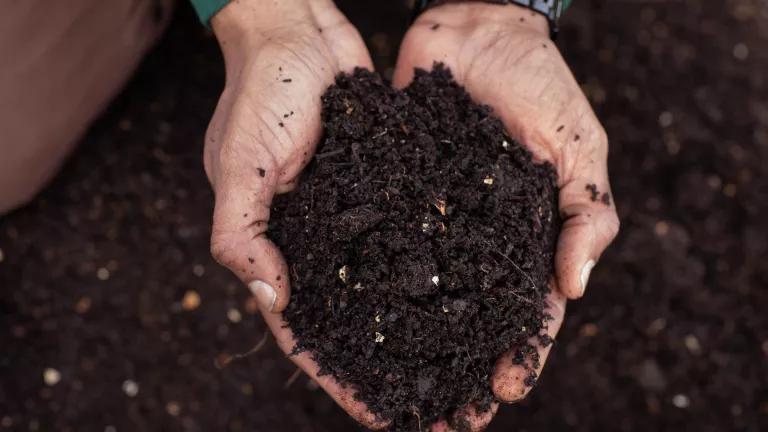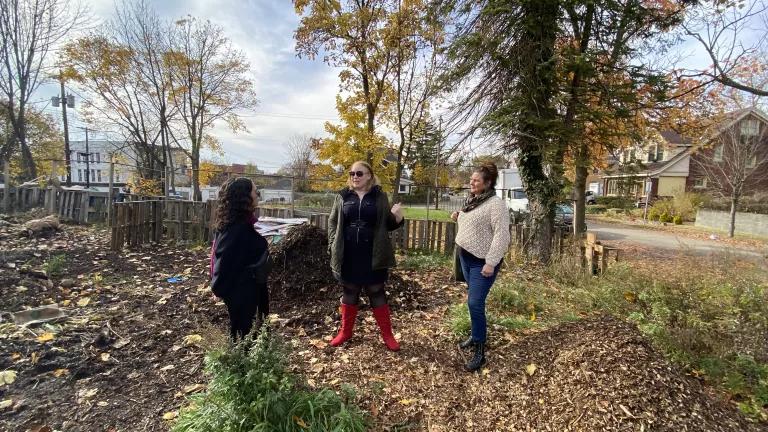In the United States, more than 40 million people lack a secure supply of food to their tables. To help meet this need, more than 4 billion meals are donated each year. But how does the food rescue system look through the eyes of those it is intended to serve? What’s working from their perspective? What isn’t? And how can the voices of those who seek food assistance be amplified in shaping the future of that system?
To explore those questions, NRDC worked with the Maryland Food Bank to design and deploy a survey of Baltimore residents who visit food pantries and other sources of donated food. More than 1,000 individuals participated, responding to a wide range of questions ranging from satisfaction with current food offerings to barriers to food assistance and ways that donated food programs could be more responsive, convenient and reflective of their needs and aspirations.
While we can’t assume that findings from Baltimore necessarily apply to other communities, this input from Baltimore residents provides key insight from those the food rescue system intends to benefit and offers a model for other cities. Our survey in Baltimore complements a landscape assessment of Baltimore’s food rescue system that we conducted earlier this year and it follows a similar survey of food pantry clients conducted last year in Denver. The intercept survey was conducted at places where residents receive donated food, including at pantries, senior feeding locations, homeless shelters, and mobile pantries. Key findings include:
- Relatively high satisfaction levels: 74% of respondents said they are very satisfied (55%) or somewhat satisfied (19%) with the quality of the food available at their pantry. Nearly as many were satisfied with the amount of food, availability of fresh produce, availability of protein and the shelf life of the food received. These are encouraging signs, although they point to an on-going need to keep improving.
- Comfort with preparing food: A fairly modest number, about 16% of respondents, indicated that they are unable or unsure of how to prepare the food received. Overall, this is a positive indication that clients are able to use the food they receive.
- Low reported rates of food waste: 92% of respondent said they consume all (64%) or nearly all (28%) of the food assistance received. When asked what they do with any food they do not eat, more than three-quarters indicate that they give it to someone else, suggesting that waste rates are very low, indeed.
- Preference for client choice models: Clients reported significantly higher satisfaction at food assistance sites that use a “client choice” where clients can choose what they take home relative to “pre-bagged” sites where clients receive a standardized bag of food.
A number of barriers and concerns about food assistance also emerged:
- Alignment with cultural beliefs: Misalignment between clients’ cultural beliefs and foods available at their pantry was one of the most common barriers to food assistance reported. Thirty-eight percent of respondents raised this concern. Of those who “strongly disagreed” that the food available aligns with their cultural beliefs, 33% identified as Native American, 32% as White, and 27% as African American.
- Compatibility with dietary needs: Nearly one-third of clients indicated that foods available at their pantry do not adequately align with their dietary needs. Reported dietary needs focused largely on health-related restrictions such as diabetic or heart-healthy diets, followed by specific food allergies and restrictions related to foods like pork or dairy.
- Accessibility for disabled residents: 30% of respondents indicated that they have a disability that makes it difficult to get to their food assistance site. This suggests a significant need to better understand and address the unique needs of food insecure individuals with disabilities.
- Increased availability: When asked how their experience with food assistance could be improved, the top two most common responses by far were “more hours and/or more days available” for their pantry (42% of clients selected this option) and “additional pantries/meal programs near my home” (selected by 41%).
- Transportation barriers: 28% of respondents indicated that transportation to their food assistance site is a barrier for them. More than 50% report that they walk to their food assistance location.
The survey results led the researchers to make the following recommendations, among others, for bringing Baltimore’s food rescue system into closer alignment with the needs and aspirations of food insecure members of the community:
- Source and distribute more nutritious foods, particularly fresh produce and proteins
- Assess how public transportation can better serve those accessing food assistance programs
- Identify and address the unique food assistance needs of Baltimore’s disabled population and other vulnerable populations
- Better align available food with client’s dietary needs and cultural beliefs
As our earlier landscape assessment in Baltimore pointed out, the food rescue system that started taking shape 40 years ago needs to adapt and evolve to meet today’s realities. How can that system become more nimble, more focused on client health, and more responsive to client and community aspirations? The voice of our food insecure neighbors must be central to that dialogue.




